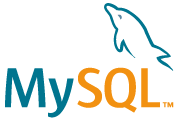About Me
Discover the person behind the data
Greetings! I'm Sandip Dhakal, a dedicated and aspiring data analyst.
Armed with a Master's in Business Information Systems from Torrens University and a Bachelor's in Information Technology from the University of Newcastle, I am on a relentless quest to unravel the stories hidden within data.
My passion lies in translating complex information into actionable insights, and my journey is characterized by continuous learning and growth.
Through this platform, I invite you to delve into my world of data exploration and discovery. Join me as I transform raw data into valuable narratives that drive informed decisions.





